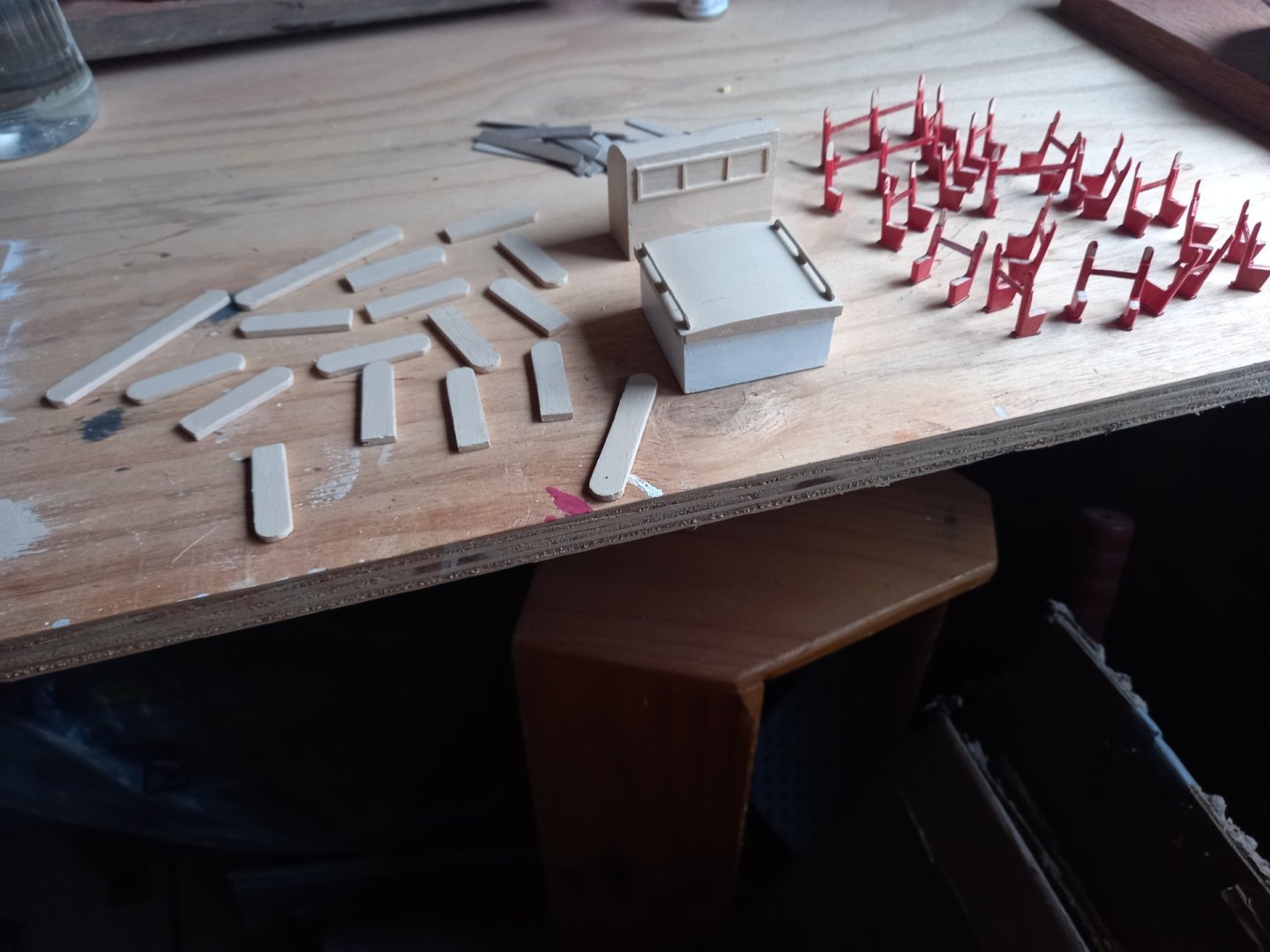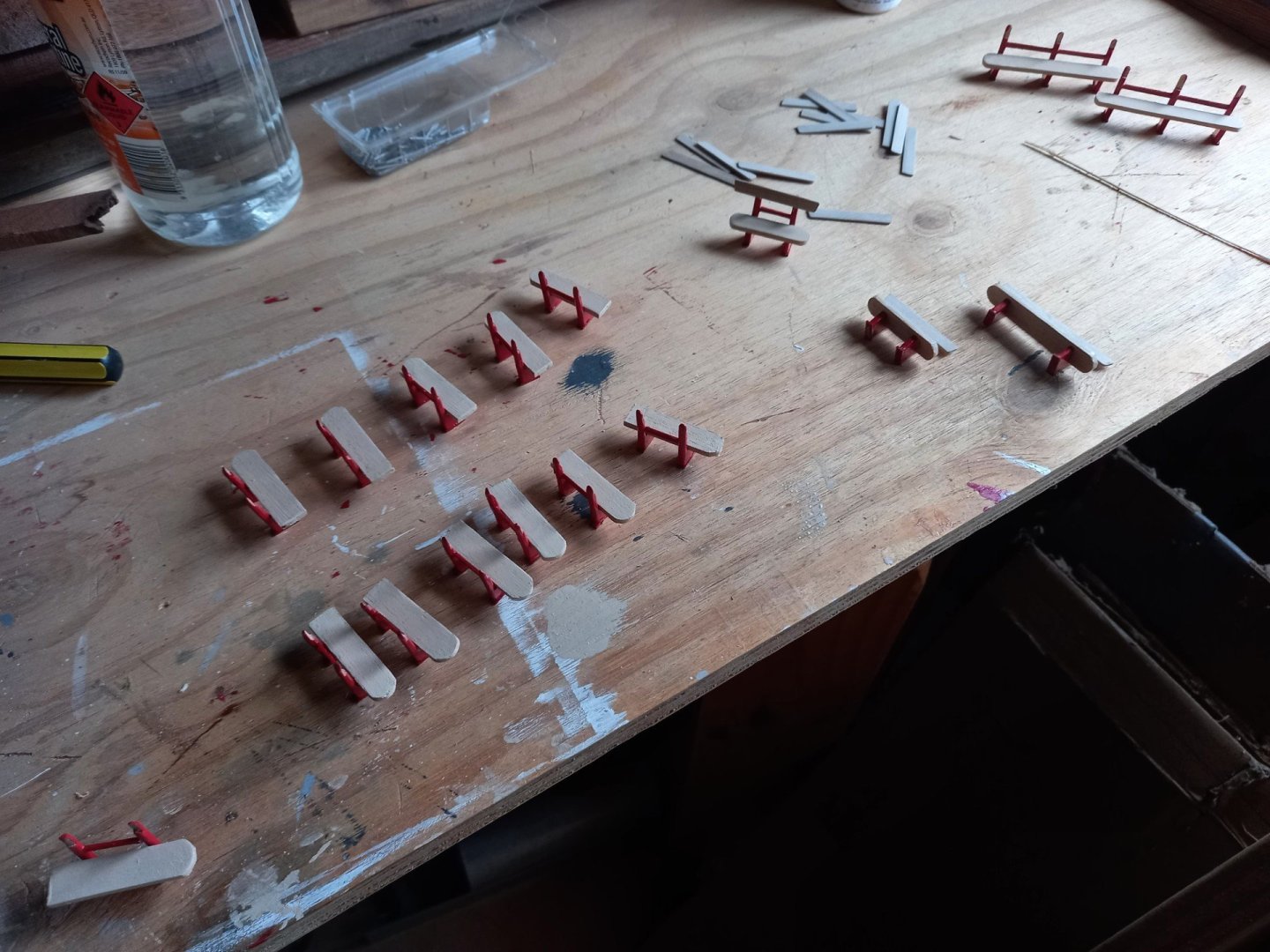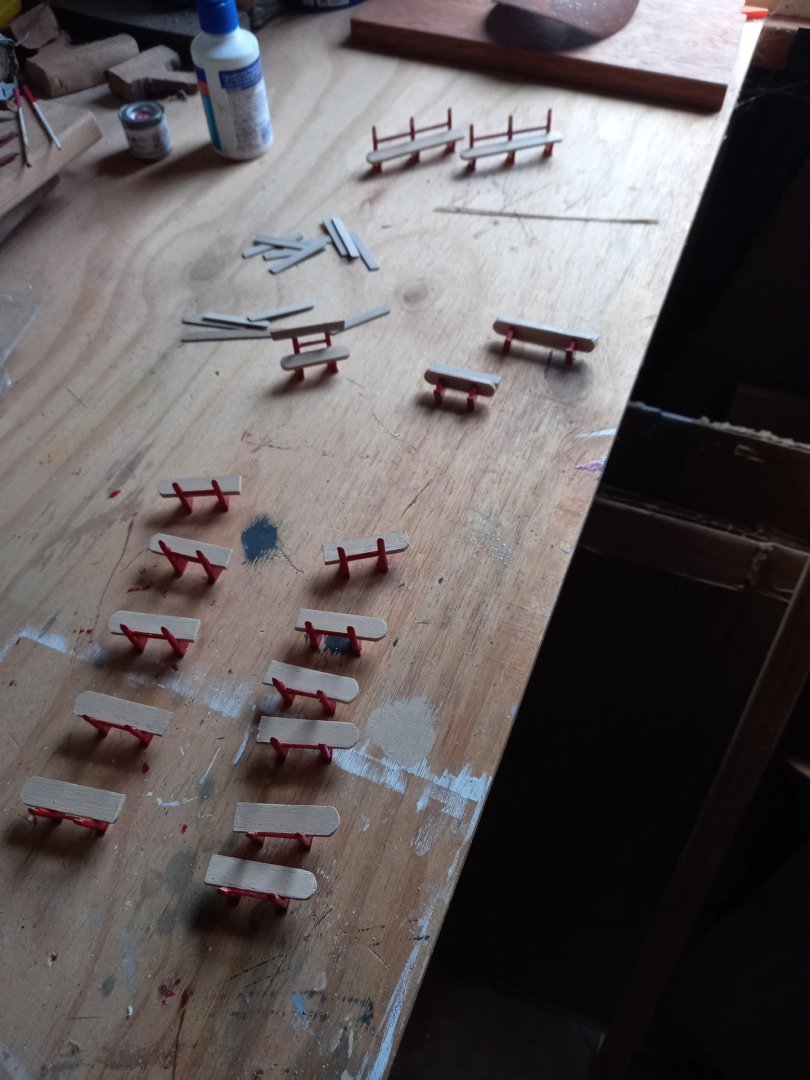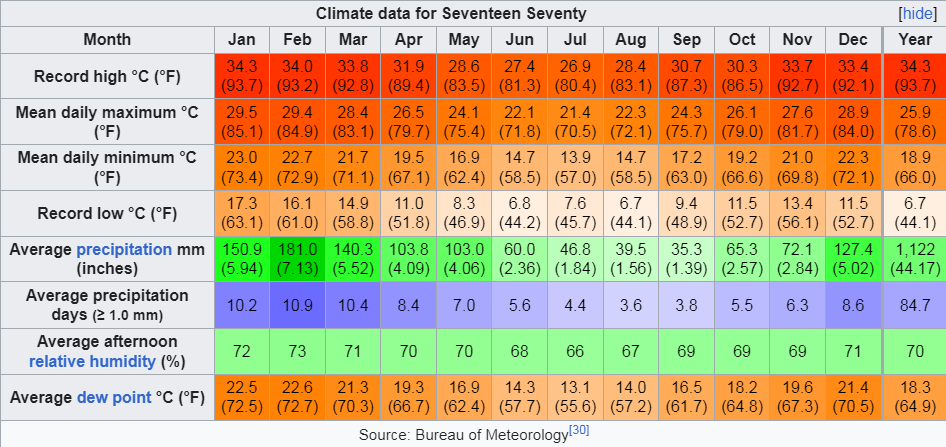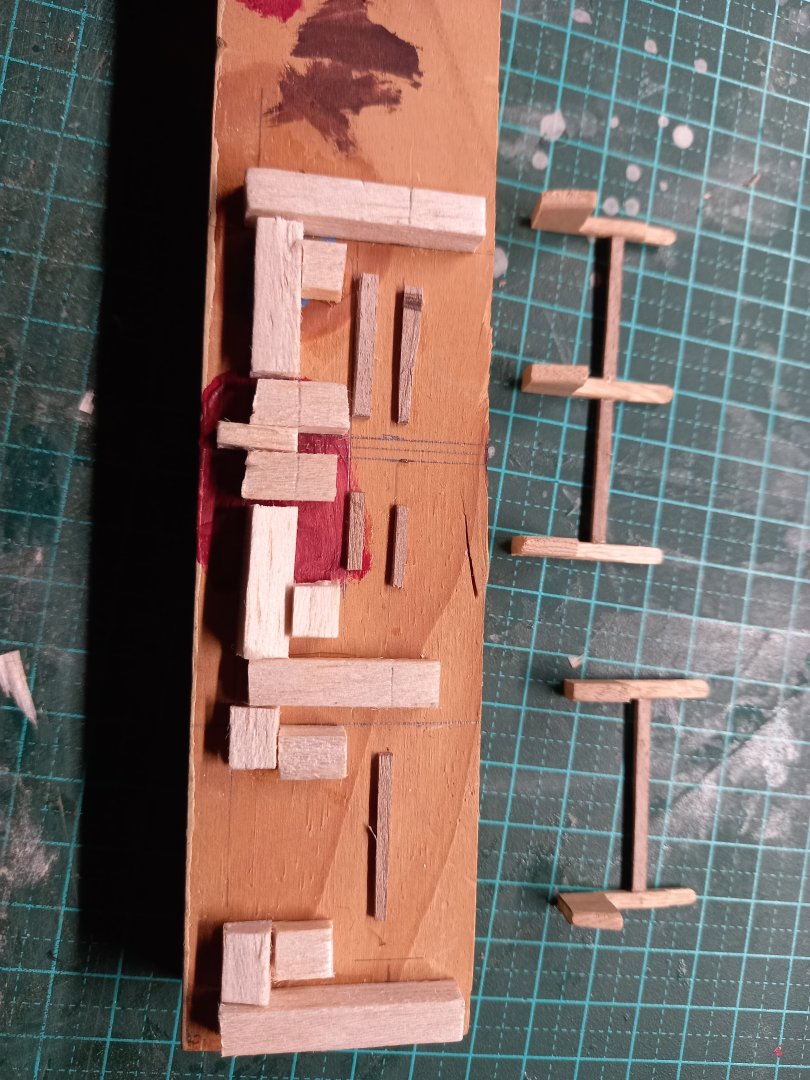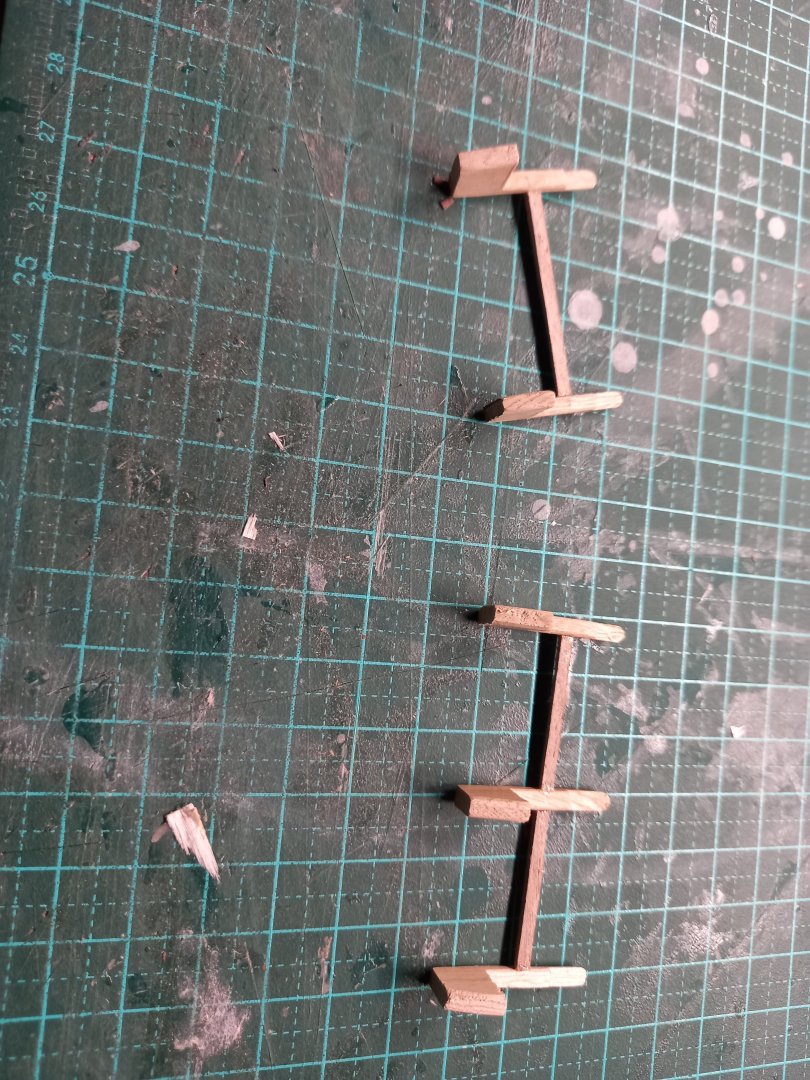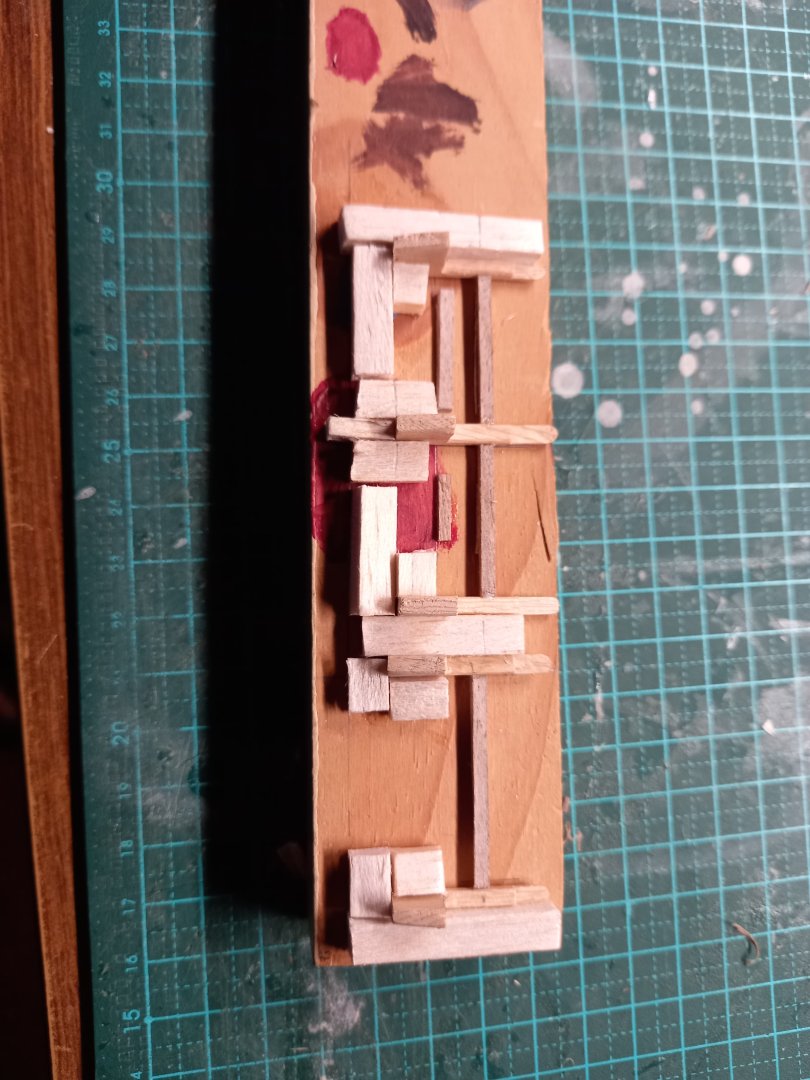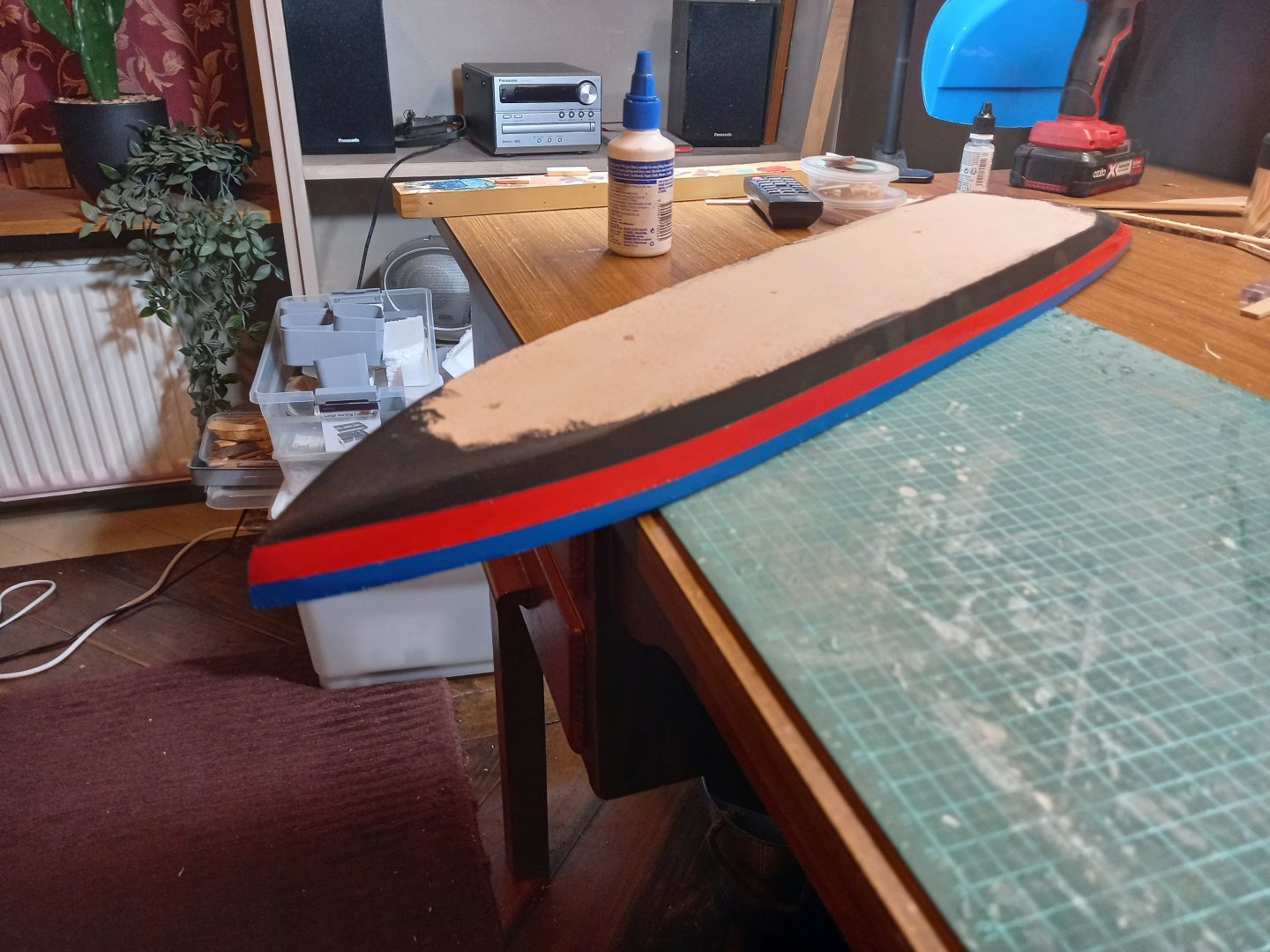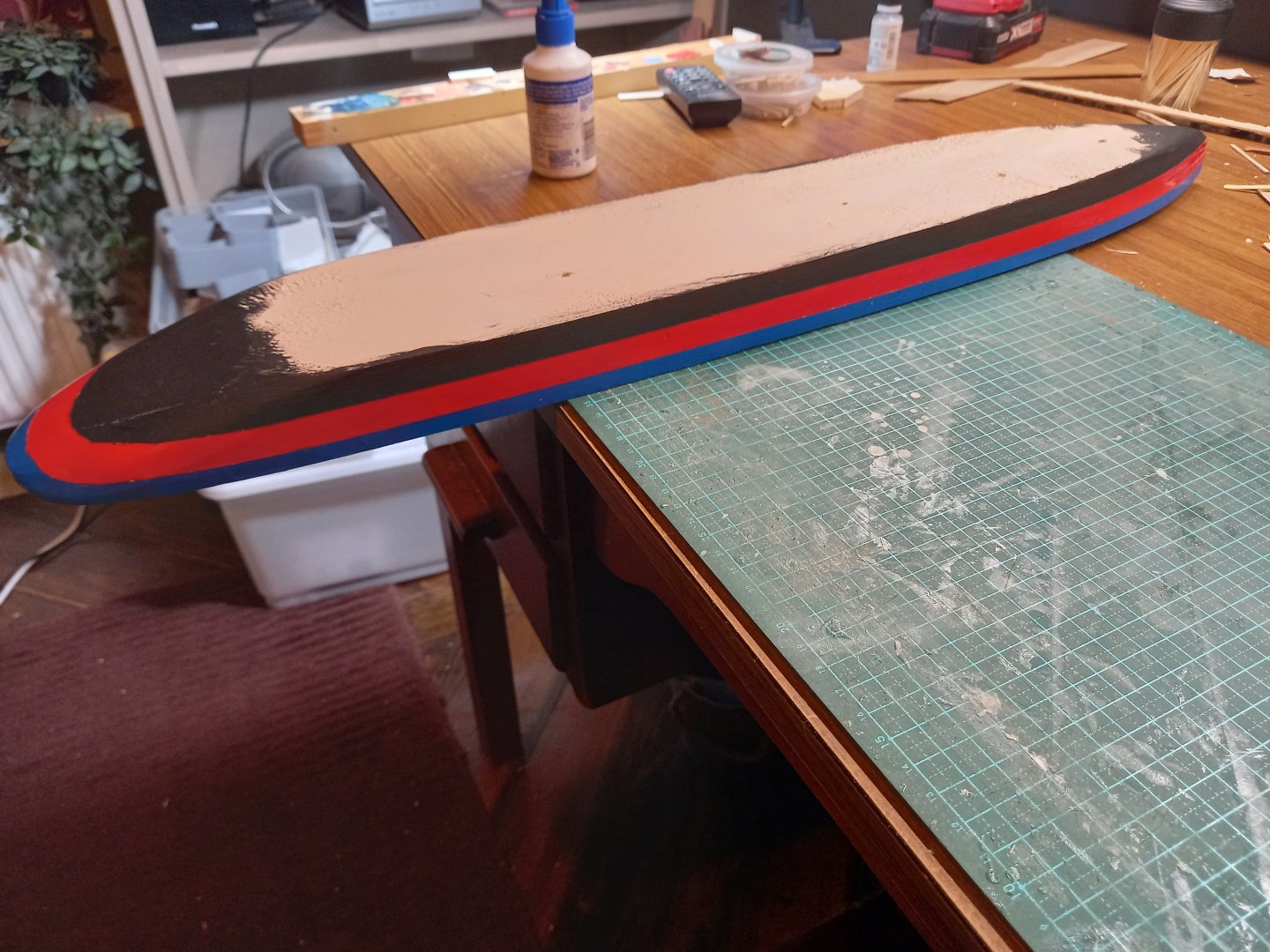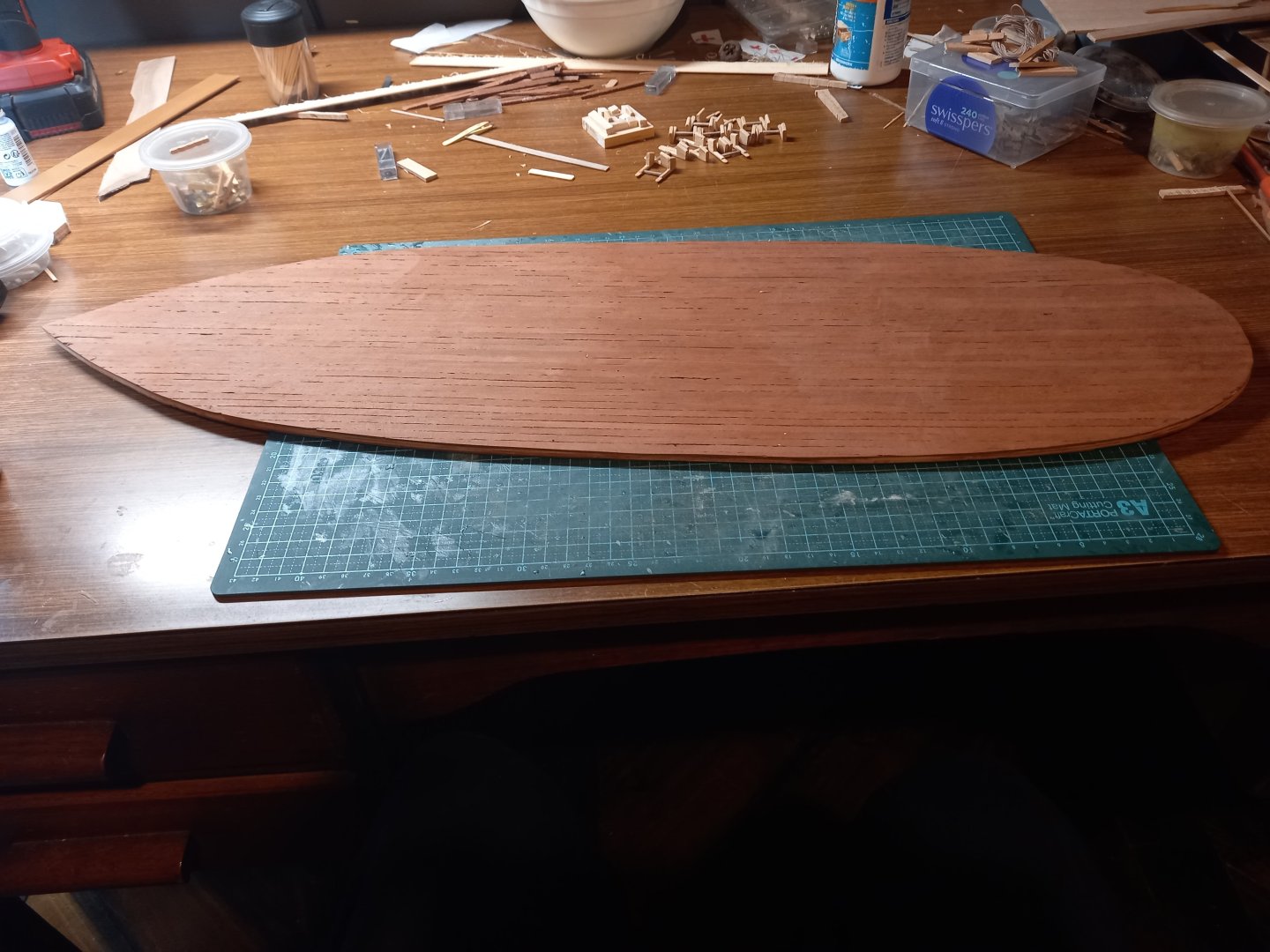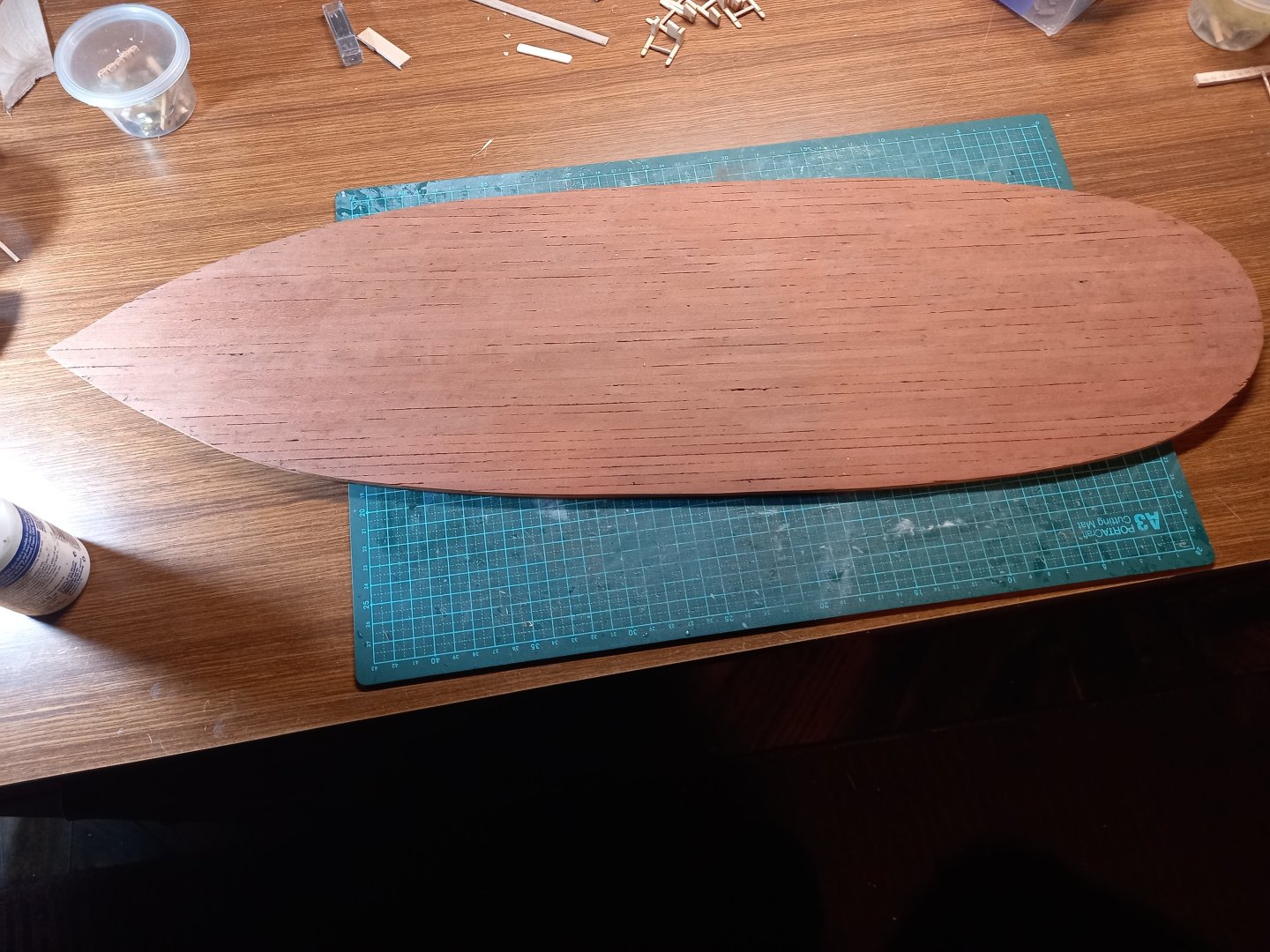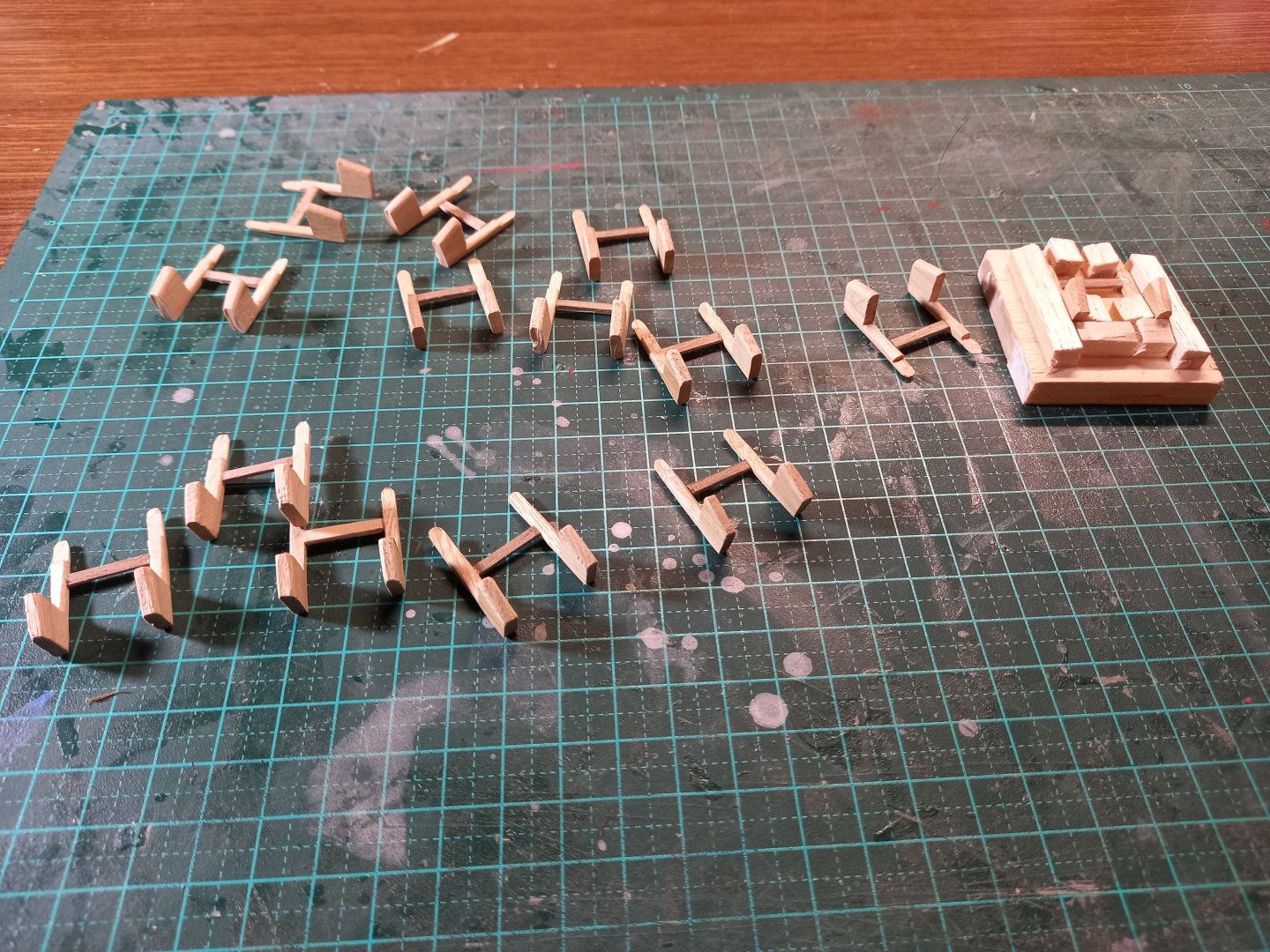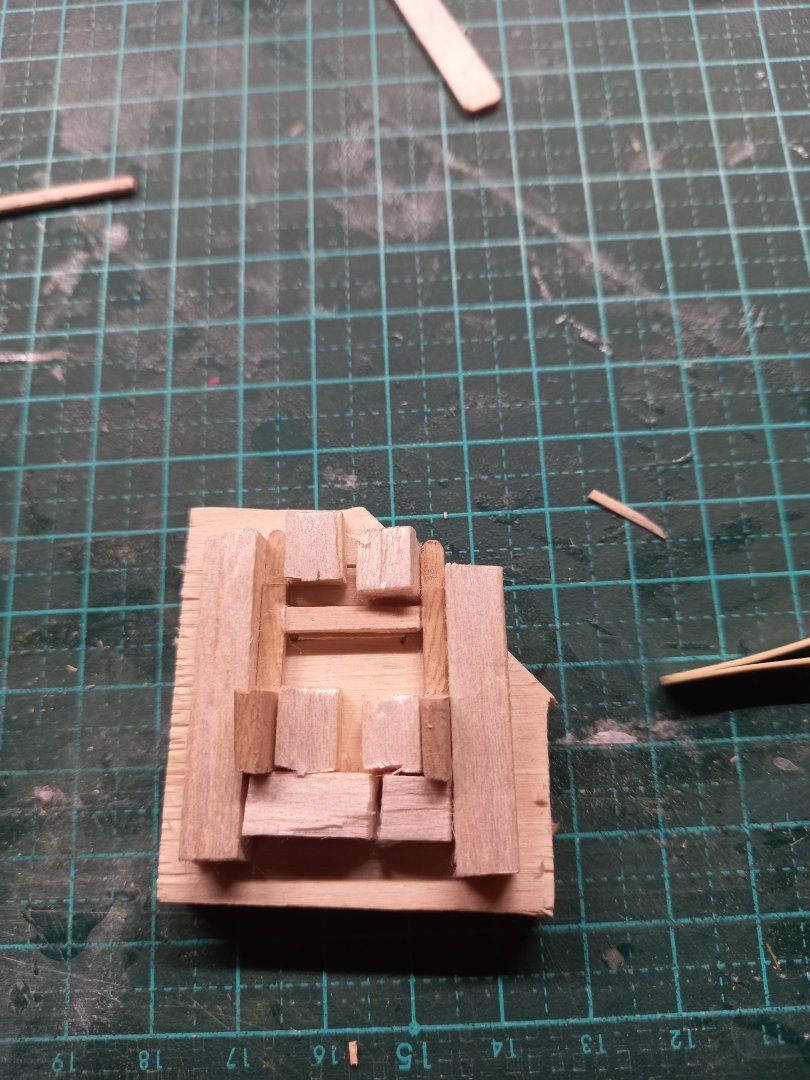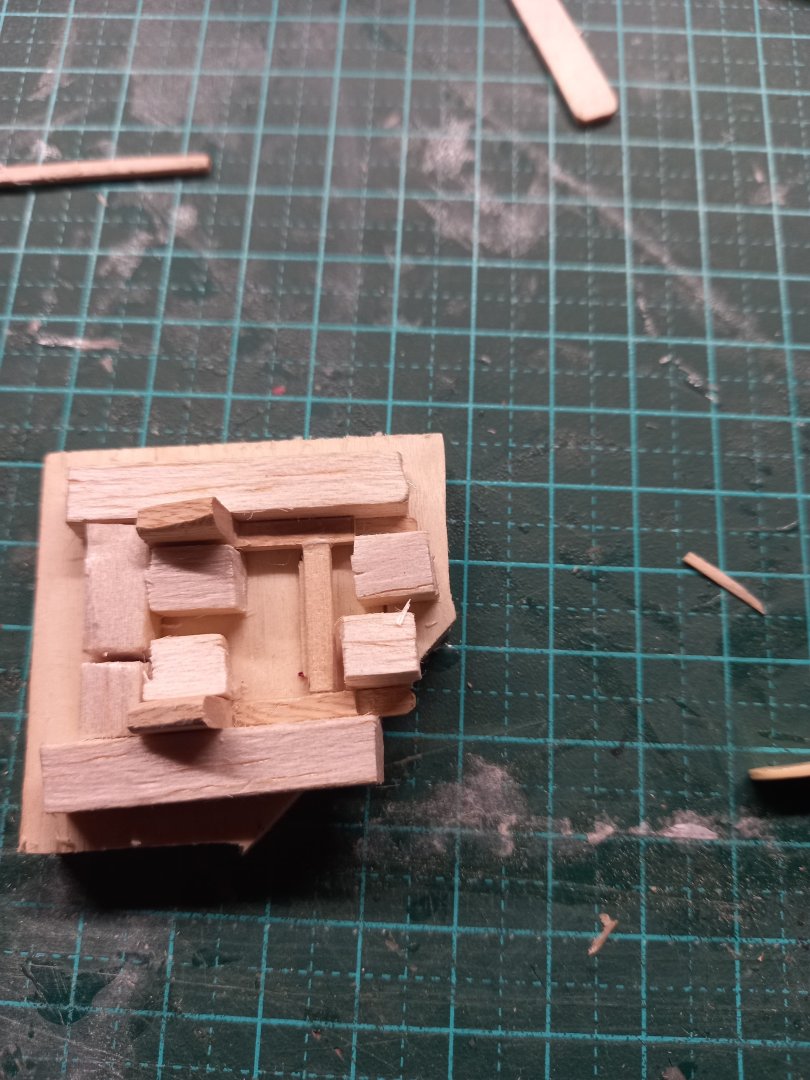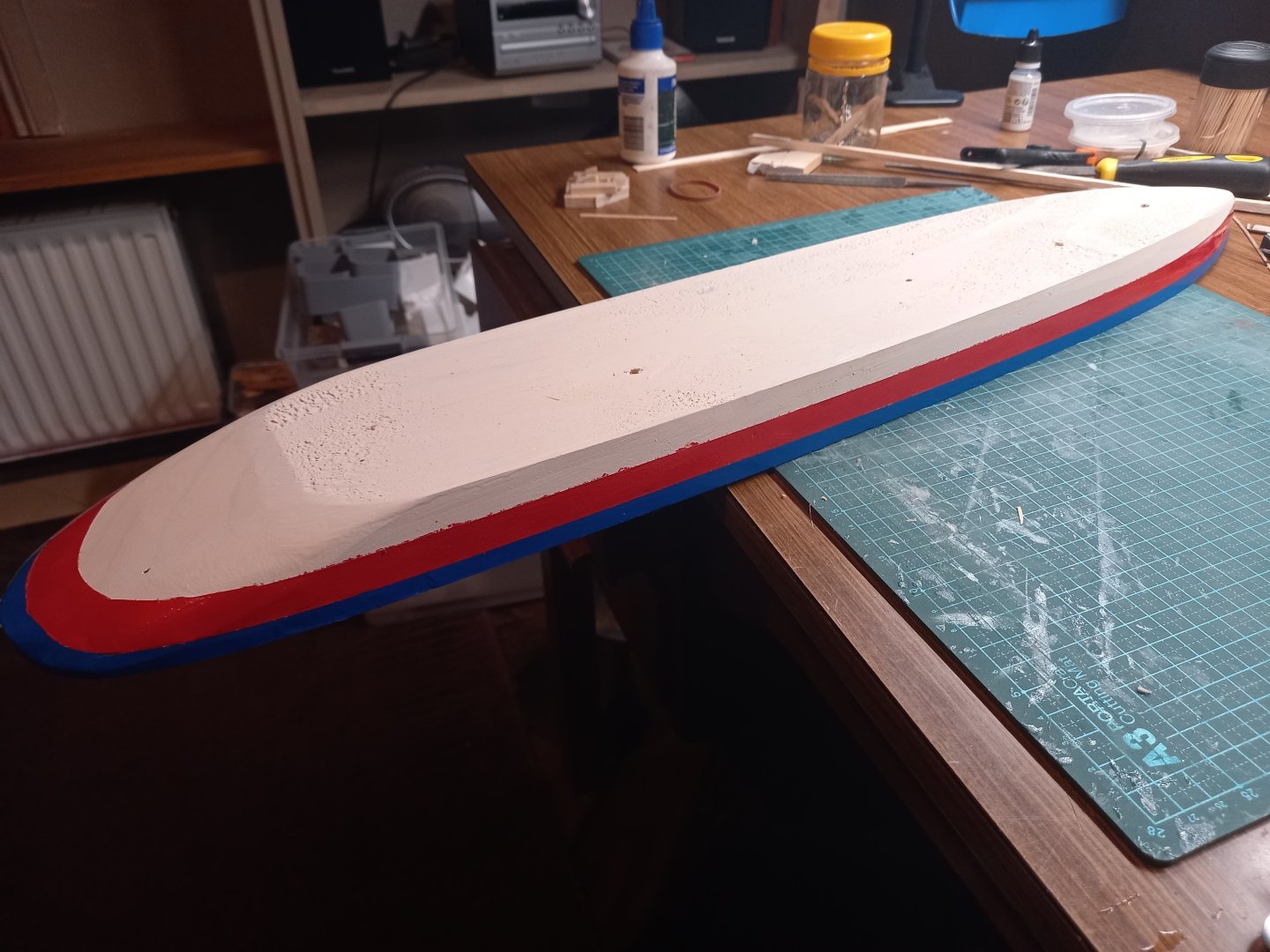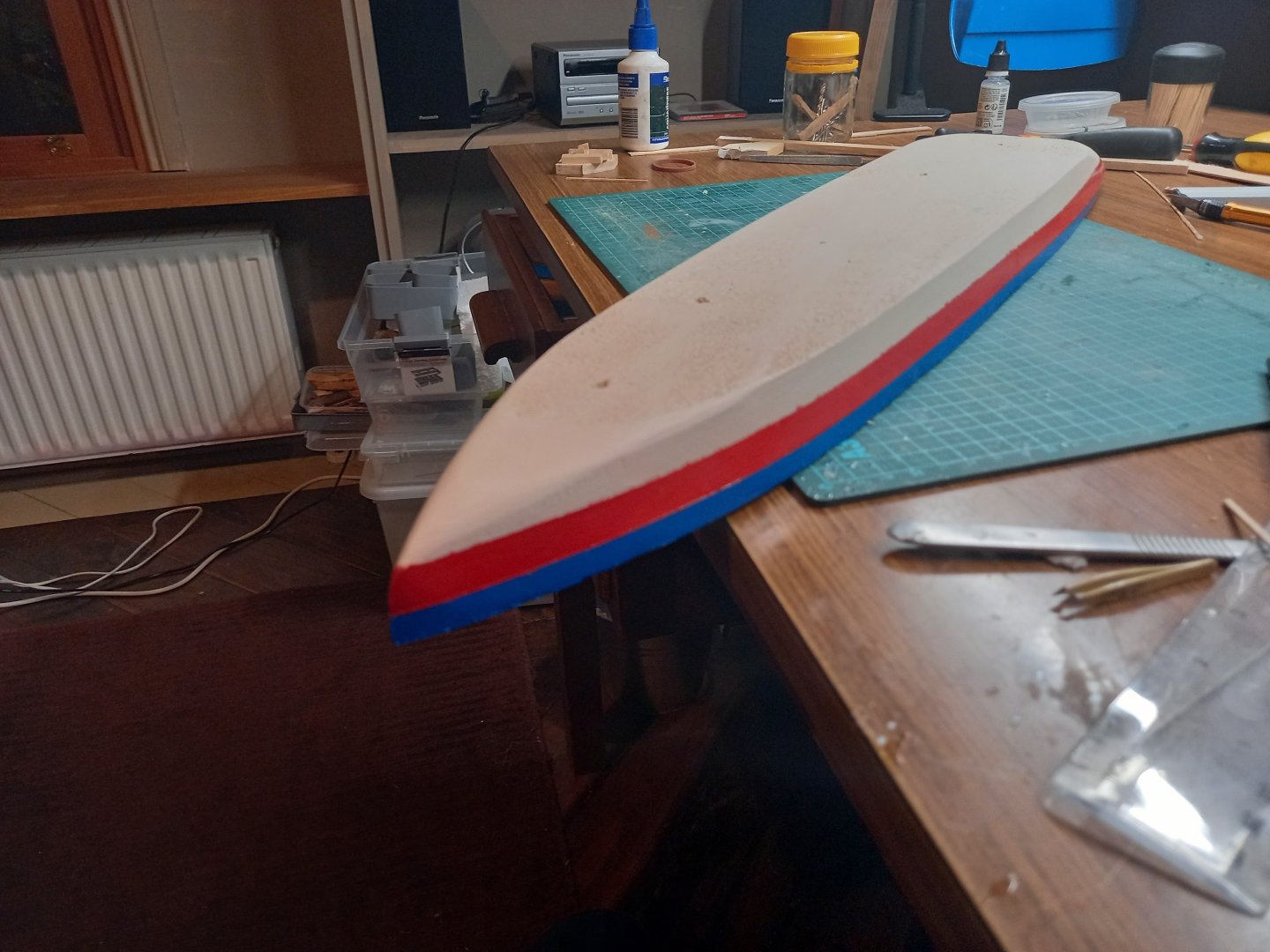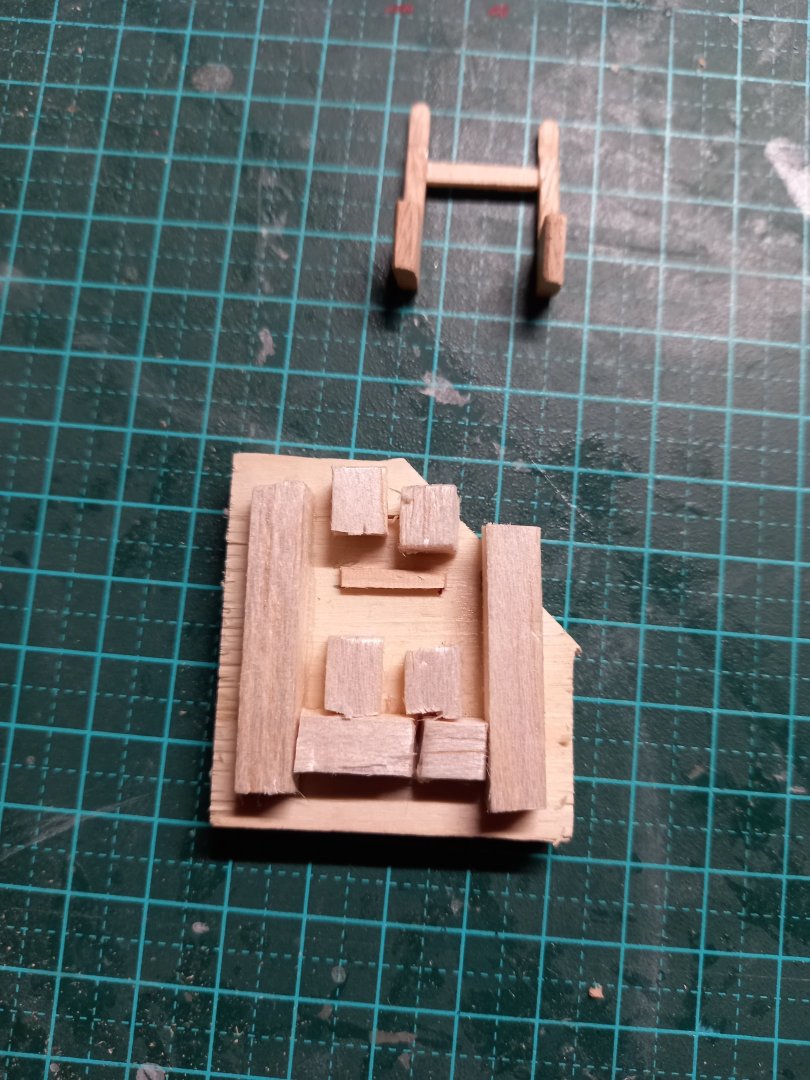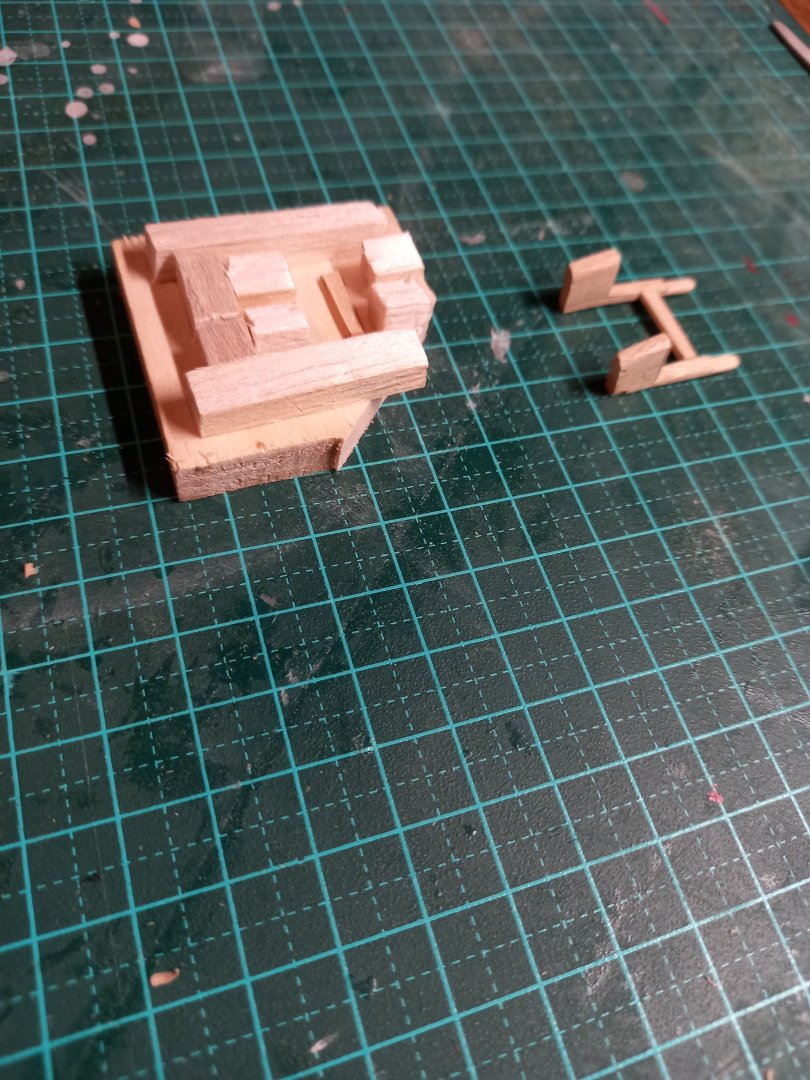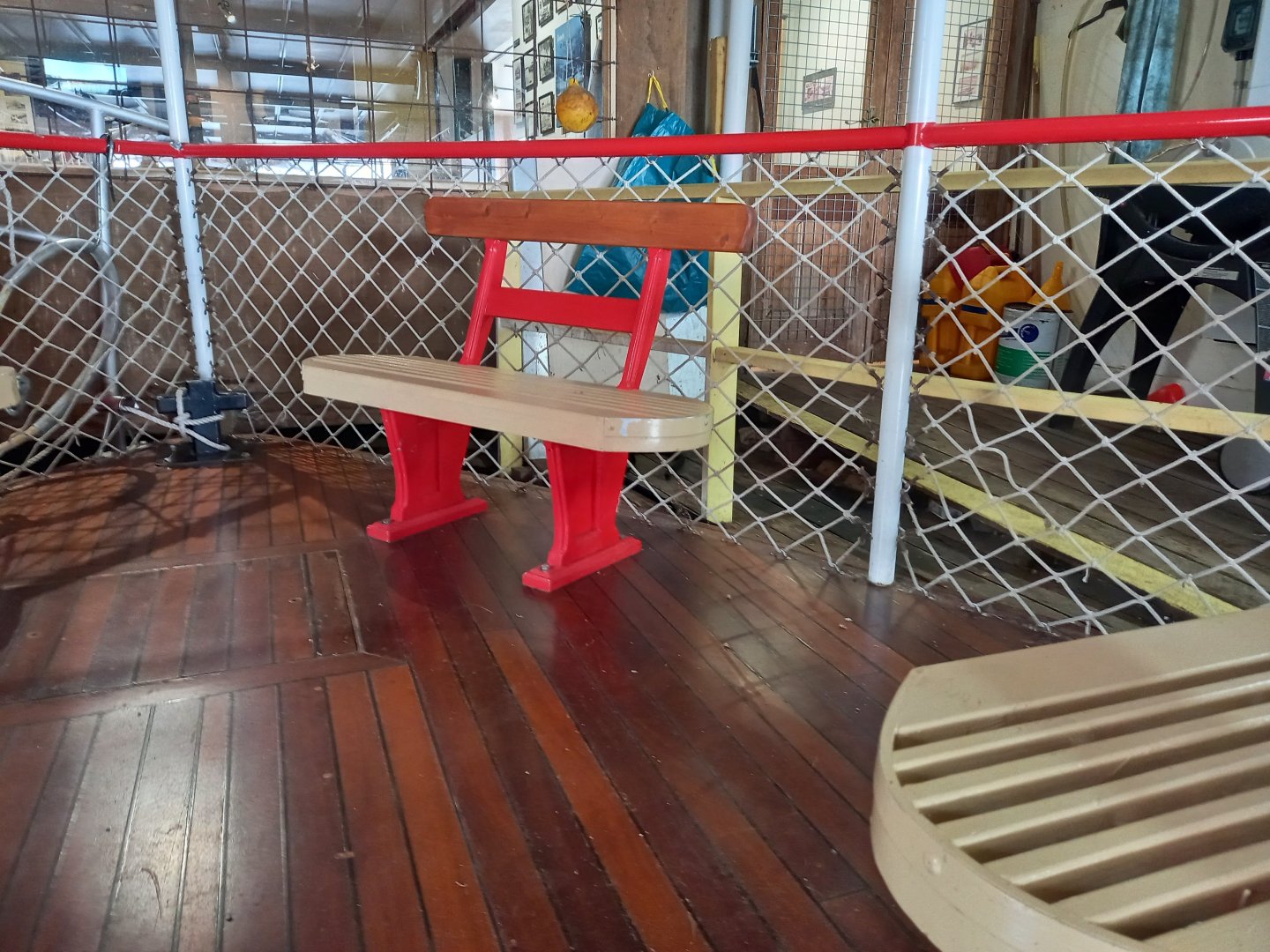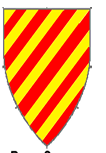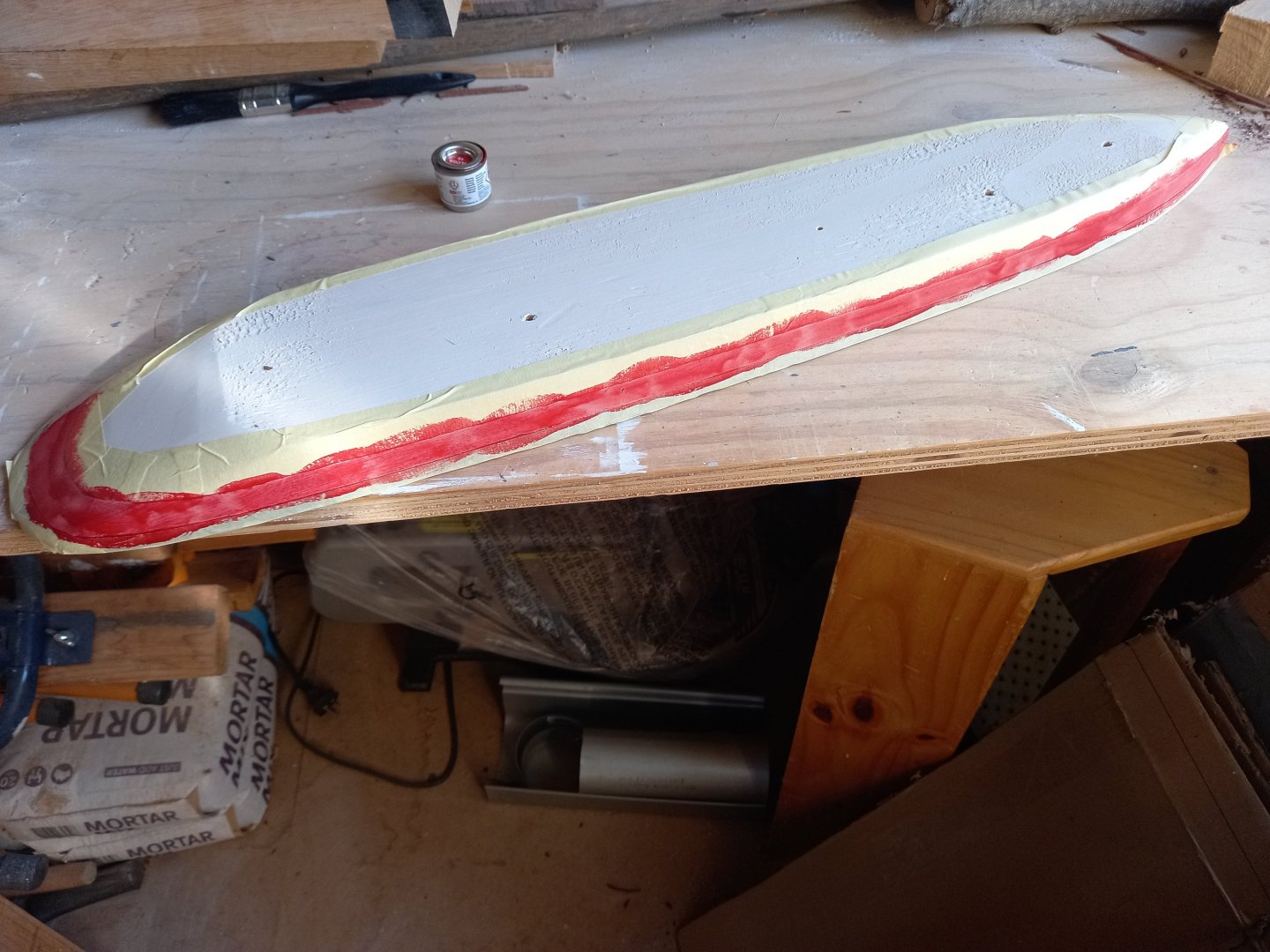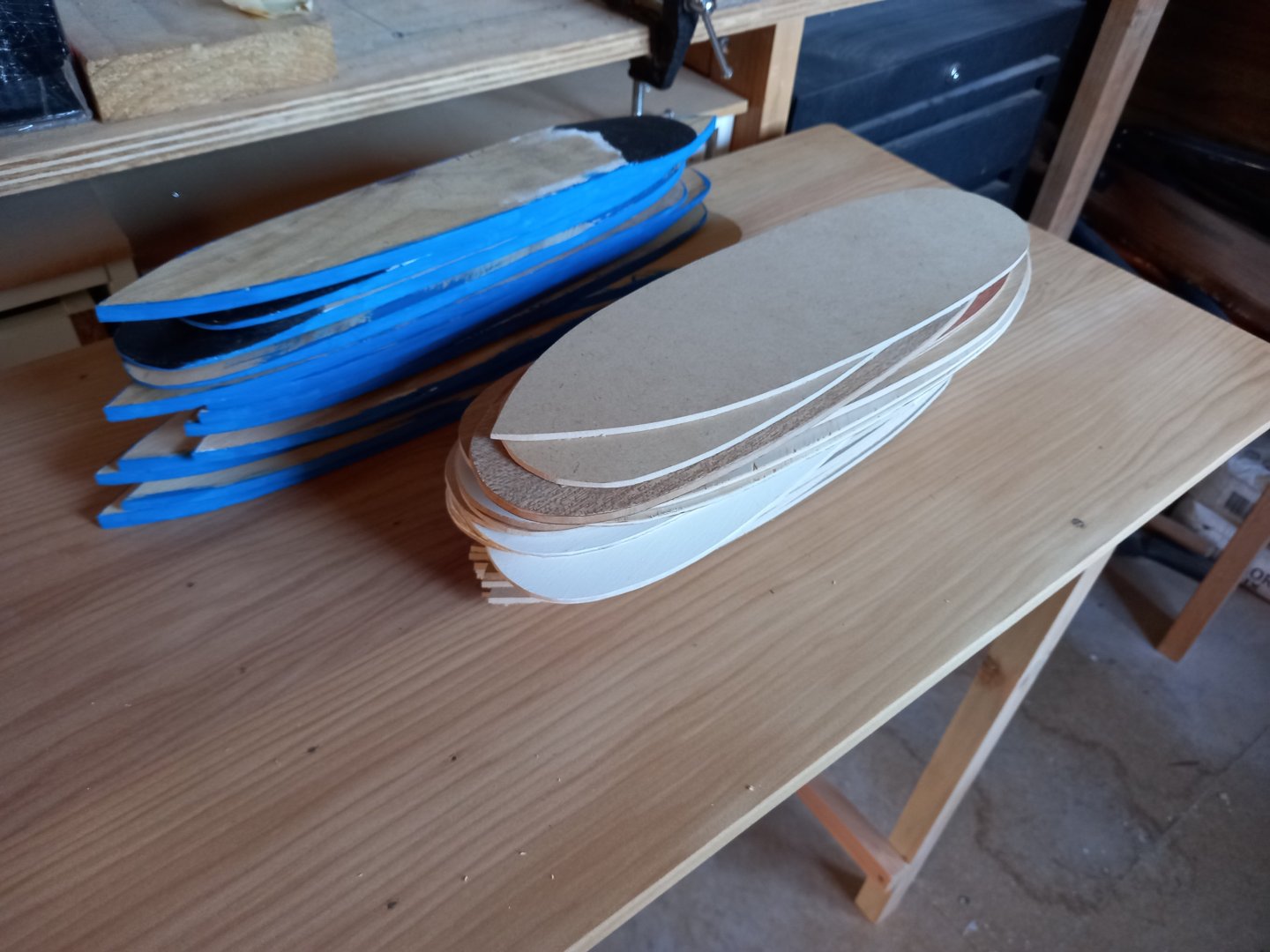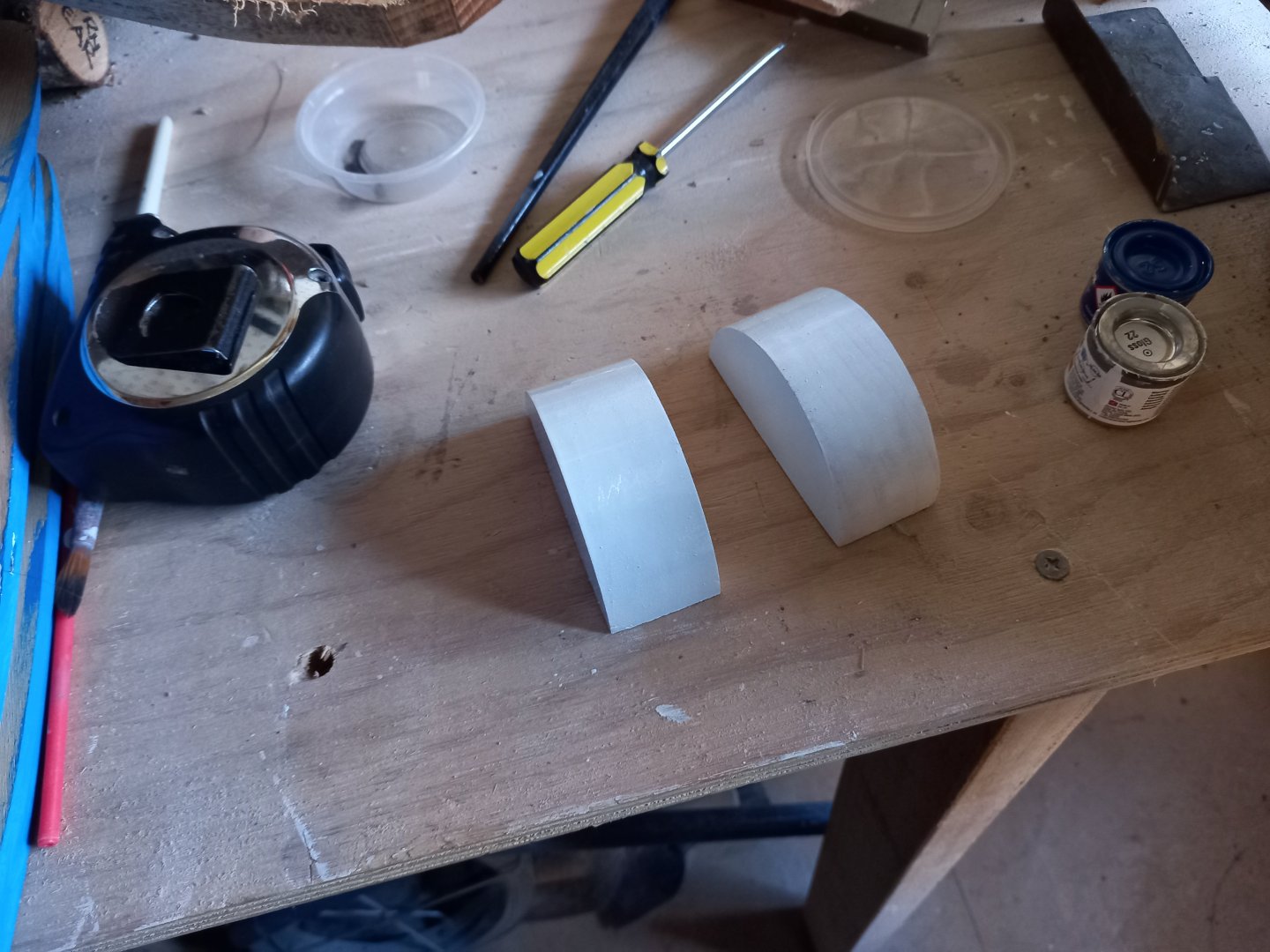-
Posts
7,987 -
Joined
-
Last visited
Content Type
Profiles
Forums
Gallery
Events
Everything posted by Louie da fly
-
Quite possibly. I was somewhat surprised to find that not all the oarbenches on a galley necessarily got used all the time. Sometimes only half the oarsmen were rowing while the other half had a rest - and I'm sure other configurations existed as well. After all, cooking only happened at certain times of day, and perhaps that pair of oars (one each side, for balance) were "retired" while that was happening. Steven
- 176 replies
-
- la reale de france
- heller
-
(and 2 more)
Tagged with:
-

Lord Nelson 1798 Royal Navy Pinnace. Maritime museum
Louie da fly replied to EZY's topic in Nautical/Naval History
Very nice! Steven -

Brass wire: it bends, it breaks!
Louie da fly replied to Mollusc's topic in Metal Work, Soldering and Metal Fittings
You need to anneal the wire. Heating it up makes it softer and more ductile (able to bend stretch etc). Others are more knowledgeable than I am on this. But brass is a particularly difficult one, unfortunately - bending it 'work hardens' it again, so you need to anneal it again every so often. I should think there are tutorials on annealing on Youtube. Here's one. I can't vouch for how good it is. Steven -
Mainly just messing with you - If you look at the photo in your post #63, the écusson de flèche is the decorative medallion on the end of a red beam at the very top. The écussons du bandinet (actually it should be écussons des bandinets, to make it all agree as a plural) are the two decorative medallions at the ends of red beams just above each side of the big decorative thingy on the stern with the globe of the world on it. "Écusson" means something like "shield thing" - perhaps escutcheon would be a good translation. The usual meaning of flèche is "arrow", but by extension it would presumably be anything long and thin and arrow-like - such as the red beam at the top. Bandinet is perhaps "little band", presumably meaning the beams either side, supporting the escutcheons. Steven
- 176 replies
-
- la reale de france
- heller
-
(and 2 more)
Tagged with:
-
Ah, but the écusson de flèche and the écussons du bandinet turned out well . . . https://modelshipworld.com/topic/29846-help-with-terminology-écusson-de-flèche-and-écusson-de-bandinet/ Steven
- 176 replies
-
- la reale de france
- heller
-
(and 2 more)
Tagged with:
-
You've done a very nice job of this rigging, mate. Looking very good. Steven
- 69 replies
-
- spanish galleon
- Imai
-
(and 1 more)
Tagged with:
-
What a wonderful subject for a ship in bottle diorama! You've even shown Gulliver wearing his glasses to protect his eyes from the Blefuscan arrows! I've always loved Gulliver's Travels, and you're doing an amazing job of bringing this episode to life. (I just hope you don't do another one of him putting out the fire in the Lilliputian royal palace!) My only regret is that you didn't post all of this until you'd reached this point in the build. I would dearly have loved to follow your progress in the development of this project. But I'm so impressed at the imagination and creativity you've displayed, and the expertise with which you've made the models and put everything together. Congratulations on a wonderful build. I'll be following this avidly from now on! Steven
-
I've been working on the deck furniture - painting the seats and the deck structures and assembling the seats. Still in progress, but these photos should give an idea of how it's going. The thingy that looks like a roll-top desk contains sliding-door compartments for storage, and is also where the wheel is to be mounted. The thingy with handles at the top is also for storage as far as I can make out. And you can see the substructures for the benches (on the right, painted red), the seats (left, cream colour) and the backs of the benches (behind the rolltop desk thingy). Benches in the process of assembly. Note that several of them are asymmetrical - apparently the owners were required to shorten one side of the seat and the backrest because of some regulation or another. More to come in due course . . . Steven
- 110 replies
-
- Paddlewheeler
- Ballarat
-
(and 3 more)
Tagged with:
-
Nice work, mate. Just keep a stiff upper lip and keep on with the good work. Despite all the problems you've encountered, she's looking very good. I hope you have success with working out the rigging details. If not, who's going to be able to tell you what you did was wrong? Steven
- 176 replies
-
- la reale de france
- heller
-
(and 2 more)
Tagged with:
-
Should be an interesting build. I'll pull up a chair. Steven
- 176 replies
-
- la reale de france
- heller
-
(and 2 more)
Tagged with:
-
No worries, mate. It'd make a change from the weather here. Rain, rain and more rain. And cold. Currently 9 degrees Celcius (48F), feels like 6. Good old Ballarat. Steven
- 69 replies
-
- spanish galleon
- Imai
-
(and 1 more)
Tagged with:
-
Oh, that's just down the road, then. Only about 250 kilometers (150 miles) Steven
- 69 replies
-
- spanish galleon
- Imai
-
(and 1 more)
Tagged with:
-
To give a bit more of a feeling for where this is, here's a larger scale map. And why the name? "The town is built on the site of the second landing in Australia by James Cook and the crew of the bark HMS Endeavour in May 1770 (and their first landing in what is now the state of Queensland)." (Wikipedia) "The community of Seventeen Seventy hold the re-enactment of this historic landing each year as part of the 1770 Festival held in May." And the climate: Steven
- 69 replies
-
- spanish galleon
- Imai
-
(and 1 more)
Tagged with:
-
Latest bits and pieces. More seats - there are 4 configurations - 5 if you count mirror-imaged seats on port and starboard sides, but only 3 configurations for the uprights. Most have 2 uprights and are 1.03 metres wide. Here they are all completed. One has 2 uprights and is 1.5 metres wide, and two have 3 uprights each. So I had to make 2 more jigs for the different ones. I have yet to add the 'feet'. Then the structures have to be painted red. Painting the black section of the hull. No 'bleeding' this time, fortunately. The bottom is left as-is - it will be screwed and glued to a flat rectangular stand. And the planked decking of the 'verandah' sanded smooth, ready to attach to the hull. Steven
- 110 replies
-
- Paddlewheeler
- Ballarat
-
(and 3 more)
Tagged with:
-
Looking very good, Peter! You've done the right thing in making your own ratlines and I'm sure they'll look a lot better than the ones provided in the kit. Nice jig, by the way. Steven
- 69 replies
-
- spanish galleon
- Imai
-
(and 1 more)
Tagged with:
-
Yep, just a bit of scrap plywood and a narrow length of balsa which conveniently had right-angled sides. Glued together with PVA (white) glue. Doesn't have to look good - just has to do the job. Steven
- 110 replies
-
- Paddlewheeler
- Ballarat
-
(and 3 more)
Tagged with:
-
Continuing the paintwork on the hull. Taking the masking off - there were a few spots where the red bled through into the blue, but they were easy to repair. Next is to paint the rest of the hull black. And I made a jig for the seats to keep the parts square and properly located. Here is the main seat structure within the jig. And here is the seat structure removed from the jig. It should save a lot of fiddle and swearing. I'll still need to add "feet" to the uprights - maybe I'll need another jig - then that will complete the parts of the seat to be painted red. Steven
- 110 replies
-
- Paddlewheeler
- Ballarat
-
(and 3 more)
Tagged with:
-
Then that would be described as paly (in heraldry a vertical band is called a pale - same word as paling, palisade, and even pilaster). Steven
- 69 replies
-
- spanish galleon
- Imai
-
(and 1 more)
Tagged with:
-
Like this - or this? - You're quite right - these shield devices are quite early - dating back to very early in the development of what we now call heraldry, where the shield device told you who was carrying the shield - and 1190 sounds about right. The first is called bendy [i.e. has diagonal lines - bends - with the top on the left] or [gold/yellow] and gules [red]; the second is the same, but as the top is on the right it's called bendy sinister. The reason for the apparent mirror image in the description is that the the device is read not from the viewpoint of the viewer but that of the person carrying the shield. So the right hand side for the viewer is his left (sinister). Very interesting. What's the family name? Steven
- 69 replies
-
- spanish galleon
- Imai
-
(and 1 more)
Tagged with:
-
I have a few reservations about the configuration of the ship as reconstructed - a little too low for its length compared with the (often extremely well-observed) contemprary representations of ships of this period, but that aside, it's a very nice video. Enjoy. Steven PS: A couple of other (fairly minor) criticisms - if they stored the barrels that way without tying them down they'd roll her over in the first bit of bad weather. And the 'pilot boat' that met her at Bristol would have been square-rigged, not lateen. Told you I was picky.
-
A bit of progress. Hulls, decks and awnings for the 1:50 models. And on the 1:25 model I've finished planking the 'verandah' area (now it needs to be sanded) and I've masked and painted the blue and red stripes on the lower hull. The first coat of red was very thin, so I had to do a second coat. I still have to do the black for the bottom. Paddle wheel covers done and painted. Steven
- 110 replies
-
- Paddlewheeler
- Ballarat
-
(and 3 more)
Tagged with:
About us
Modelshipworld - Advancing Ship Modeling through Research
SSL Secured
Your security is important for us so this Website is SSL-Secured
NRG Mailing Address
Nautical Research Guild
237 South Lincoln Street
Westmont IL, 60559-1917
Model Ship World ® and the MSW logo are Registered Trademarks, and belong to the Nautical Research Guild (United States Patent and Trademark Office: No. 6,929,264 & No. 6,929,274, registered Dec. 20, 2022)
Helpful Links
About the NRG
If you enjoy building ship models that are historically accurate as well as beautiful, then The Nautical Research Guild (NRG) is just right for you.
The Guild is a non-profit educational organization whose mission is to “Advance Ship Modeling Through Research”. We provide support to our members in their efforts to raise the quality of their model ships.
The Nautical Research Guild has published our world-renowned quarterly magazine, The Nautical Research Journal, since 1955. The pages of the Journal are full of articles by accomplished ship modelers who show you how they create those exquisite details on their models, and by maritime historians who show you the correct details to build. The Journal is available in both print and digital editions. Go to the NRG web site (www.thenrg.org) to download a complimentary digital copy of the Journal. The NRG also publishes plan sets, books and compilations of back issues of the Journal and the former Ships in Scale and Model Ship Builder magazines.




